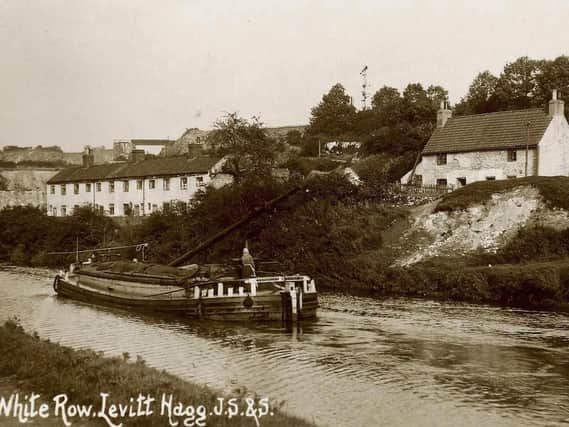Doncaster's lost hamlet of Levitt Hagg
This week we take a look at the one-time hamlet of Levitt Hagg that lay between Sprotbrough and Warmsworth.  Levitt Hagg was located on the south bank of the River Don, three miles west of Doncaster and just upstream from Sprotbrough Weir, at a place known as Warmsworth Cliff, writes Dave Fordham.  The term Levitt Hagg was first recorded in 1629 and described an area within Warmsworth Parish, Levitt possibly derived from the name of a local land owner, and Hagg denoting a clearing beneath cliffs.  In 1750, John Battie of Warmsworth Hall built a house called Levitt Hagg at this location for use by the manager of his new limestone quarrying operations, with three workers' cottages.  John Battie's son, William Wrightson of Cusworth Hall, subsequently leased the quarries to various parties, ending with the firm of Lockwood Blagden & Crawshaw Ltd. who introduced boat building and built more cottages as the quarries expanded.  Stone was loaded on to barges and later exported by train, following the opening of the South Yorkshire Railway in 1849.  Coal was imported to the site by barge and rail to fire the lime kilns. In 1878, William Battie-Wrightson donated land for the construction of a Mission Hall for use as a reading room and place of worship. By this time the population of Levitt Hagg was around 100 people who lived in 21 cottages. Water was obtained from wells and the River Don.  In 1925, a report by the County Medical Officer criticised the sanitary conditions in the cottages, frequently flooded by the river which also contaminated the water supply. Increasing mechanisation at the quarries caused a decline in the workforce and Doncaster Rural District Council obtained orders to clear the settlement.  The first houses were demolished in 1940 and the rest after the Second World War.


'‹'‹'‹'‹'‹'‹'‹*
Â
Â
Â
Â
Â
Â
Â
Â
Â
Â
Â
Â
Â